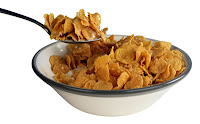.jpg)
Everyone knows children should be wary of strangers offering boiled lollies. We should all be equally wary when an industry that makes billions from selling sweets to our children brings us the good news that our kids aren’t really obese.
A couple of weeks ago Kate Carnell, CEO of the Australian Food and Grocery Council (AFGC) declared that it is “simply not true” that Australia is in the grip of a childhood obesity epidemic. Ms Carnell relied on the Australian National Children’s Nutrition and Physical Activity Survey in support of her argument.
That “study” was a telemarketer “weigh-in” paid for (in part) by the AFGC (Ms Carnell forgot to mention that). The AFGC represents Australia’s “highly processed food industry” and has a mandate to “manage issues relevant to the industry and to promote the industry and the virtues of its products, enabling member companies to grow their businesses”. So Ms Carnell was just doing her job.
It won’t surprise many readers to discover that “weigh-ins” conducted by telemarketers suggest that our children are less fat (and exercise more) than we thought. We’re all a lot thinner when doing surveys with strangers on the phone.
Research on the childhood obesity problem in Australia is pretty thin on the ground. And comparing the available data is difficult because of extreme contrasts in methods (and even the definition of what constitutes an obese child).
One thing all the studies and surveys show is a consistent and alarming trend. Even the AFGC sponsored survey showed an increase in childhood obesity over the last such survey in 1995. This trend is reflected in a slew of more rigorous studies of adult obesity. To suggest that a telemarketer weigh-in (partly funded by a group with a commercial interest in the outcome) disproves that trend is, at best, disingenuous.
Ms Carnell used the survey results as a foundation for her argument against further regulation of advertising of junk food to children. The AFGC opposed voluntary regulation of advertising when it was first proposed as part of the watered down recommendations from the 2002 New South Wales Childhood Obesity Summit. When that didn’t work, the AFGC decided to get in the game rather than stand on the sidelines.
And so, Ms Carnell’s argument is part of a bigger campaign for hearts and minds by the AFGC. It is not a campaign for my heart or mind and probably not yours. I’m not an employee of the Australian Communications and Media Authority (ACMA) and I certainly don’t sit on the Parliamentary Inquiry into Obesity.
The AFGC campaign is not about convincing you and me that Coke (or any other product sold by one of its members) is health food (although if we happen to come away believing that, it’s well and good). No, it’s about convincing the ACMA (and Parliament) that the AFGC’s members do not market unhealthy foods to children. The ACMA is proposing to update its Children’s Television Standards. At the start of its consultations in 2007 it had toyed with the idea of (gasp) regulating the advertising of food and beverages to children. But, after receiving some forceful submissions from the AFGC on the point, has decided now was not the time.
So what is the AFGC worried about? When you read the fine print, the report says that the ACMA won’t regulate for now. But the door has been left well and truly ajar. The ACMA says it may change its mind if anyone comes up with a standard way of labelling foods which are high in fat, sugar and salt. This would then allow them to seriously consider rules aimed at limiting the advertising of such foods to children.
This is where those busy bodies over at the Parliament come in. Their inquiry into obesity is turning up quite a few submissions from folks like CHOICE who want to see a traffic light system of labelling introduced to help consumers identify such foods. The AFGC has attacked CHOICE for daring to propose such a thing, even going so far as to suggest that their researchers cooked the books.
The AFGC doesn’t plan to sit back and meekly let unambiguous labelling be implemented, so a few months ago, the next part of the master strategy was unveiled on the media stage. The AFGC announced they had a plan. They would voluntarily sign up to a code of conduct that says they won’t advertise to kids under 12 years of age.
What’s wrong with the AFGC’s voluntary ban? Surely they’re helping out by jumping the gun? Well, in a word, no. This way they get to define the word “children”. In its initial examination of the need for reform, The ACMA had been dropping disturbing hints about bans that defined a child as anyone under 16 (rather than 12).
Even worse than that, with the ACMA doing the drafting there would be no chance to parachute in weasel words like the ones proposed by the AFGC. An example appears in the wording of the voluntary “ban” itself when it says the ban should be applied “unless those products represent healthy dietary choices … presented in the context of a healthy lifestyle”.
If you want to know what that looks like, you need look no further than Coke’s new website, which is choc-full of healthy lifestyle messages for Coke drinkers.
The AFGC’s hope is that by showing what terribly good corporate citizens its members are, they’ll head the Parliamentary Obesity enquiry and the ACMA off at the pass. Parliament won’t insist on traffic light labelling and the highly processed food industry will avoid the cascade effect of the ACMA implementing actual bans rather than voluntary ones written by the AFGC.
It may seem like the AFGC is jumping at shadows, but they have paid attention to what befell Big Tobacco. They know it’s better to stop this particular train before it leaves the station. If they can’t, they fear it won’t be long before the only place you’ll be able to see a Coke ad will be in the sealed section of an adult magazine.
Published in Online Opinion





.jpg)
.jpg)
.jpg)
.jpg)











Recent Comments